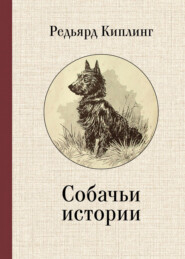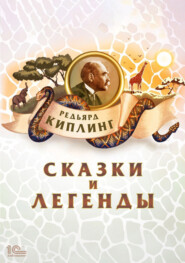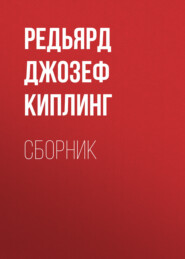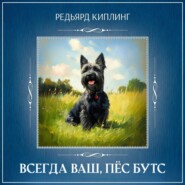По всем вопросам обращайтесь на: info@litportal.ru
(©) 2003-2024.
✖
The Graves of the Fallen
Настройки чтения
Размер шрифта
Высота строк
Поля
The Graves of the Fallen
Rudyard Kipling
Rudyard Kipling
The Graves of the Fallen
The Graves of the Fallen
Note
This Descriptive Account of the work of the Imperial War Graves Commission was written by Mr. Rudyard Kipling at the Commission’s request.
What the Commission is
THE Commission consists of: —
The Secretary of State for War.
The Secretary of State for the Colonies.
The Secretary of State for India.
The First Commissioner of Works.
The Hon. Sir George Perley, K.C.M.G. (appointed by the Government of Canada).
The Right Hon. Andrew Fisher, P.C. (appointed by the Government of Australia).
The Hon. Sir Thomas Mackenzie, K.C.M.G. (appointed by the Government of New Zealand).
The Right Hon. W. P. Schreiner, P.C., K.C., C.M.G. (appointed by the Government of the Union of South Africa).
The Hon. Sir Edgar Bowring (appointed by the Government of Newfoundland).
and the following members who accepted the invitation to help in this work, and were appointed by Royal Warrant: —
Sir William Garstin, G.C.M.G., G.B.E.
Mr. Harry Gosling, C.H., J.P.
Mr. Rudyard Kipling.
General Sir C. F. N. Macready, G.C.M.G., K.C.B.
General Sir Herbert C. O. Plumer, G.C.B., G.C.M.G., G.C.V.O.
Admiral Sir Edmund S. Poë, G.C.V.O., K.C.B.
Major-General Fabian Ware, C.B., C.M.G.
All letters should be addressed to the Secretary, Imperial War Graves Commission, Winchester House, St. James’s Square, S.W. 1; and not to any individual member of the Commission.
Its History
THE origin and development of the Imperial War Graves Commission is very simple. In the first days of the war the different armies engaged created organisations, under the direction of the War Office, to register, mark, and tend the graves of British soldiers, as well as to answer inquiries from relatives, and, where possible, to send them photographs of the graves. Later, a National Committee was constituted, which, on the suggestion of the Prince of Wales, who took a keen personal interest in the work, was expanded into an Imperial Commission, representing the Dominions, India, the Colonies, the fighting Services, Labour, the great public departments interested, and the British Red Cross, which latter had supplied, as it still does to a considerable extent, the funds for photographing and planting the graves.
Its Finance
THE finance of the Commission is Imperial. All parts of the Empire have generously and unreservedly promised to bear their share of the expenses. The Imperial War Conference, having considered the proposals of the Commission, passed the following resolution on June 17, 1918: “The Conference desires to place on record its appreciation of the Labours of the Imperial War Graves Commission, and is in favour of the cost of carrying out the decisions of the Commission being borne by the respective Governments in proportion to the numbers of the graves of their dead.”
THE CEMETERIES
WITH the growth of the war the Commission’s work naturally covered every part of the world where the men of the Empire had served and died – from the vast and known cities of our dead in Flanders and France to hidden and outlying burial-grounds of a few score at the ends of the earth. These resting-places are situated on every conceivable site – on bare hills flayed by years of battle, in orchards and meadows, beside populous towns or little villages, in jungle-glades, at coast ports, in far-away islands, among desert sands, and desolate ravines. It would be as impossible as undesirable to reduce them all to any uniformity of aspect by planting or by architecture.
In a war where the full strength of nations was used without respect of persons, no difference could be made between the graves of officers or men. Yet some sort of central idea was needed that should symbolise our common sacrifice wherever our dead might be laid; and it was realised, above all, that each cemetery and individual grave should be made as permanent as man’s art could devise.
Their Design and Care
THE Commission instructed Sir Frederic Kenyon, K.C.B., to report how these aims could best be realised, and he, after consulting very fully with the relatives, representatives of the Services, religion and art, and knowing the practical limitations, particularly in obtaining labour, for carrying out such a vast undertaking, recommended that in each cemetery there should stand a Cross of Sacrifice, and an altarlike Stone of Remembrance, and that the headstones of the graves should be of uniform shape and size. Stone crosses to succeed the temporary wooden crosses were at first suggested, but crosses of the small size necessitated by the nearness of the graves to each other do not allow sufficient space for the men’s names and the inscriptions, and are also by their shape too fragile and too subject to the action of frost and weather for enduring use. Plain headstones, measuring 2 ft. 6 in. by 1 ft. 3 in., were therefore chosen, upon which the Cross or other religious symbol of the dead man’s faith could be carved and his Regimental badge fully displayed. The Regiments have been consulted as to the designs of these badges, some of which have now been approved and are ready for engraving as soon as experiments which are being carried on have shown how to overcome the difficulties of dealing with such numbers. In due time, then, wherever a man may be buried, from East Africa to North Russia, his headstone will carry his Regimental badge, identifiable the world over.
Besides the fighting forces, provision must be made for the graves of the merchant-seamen and discharged men whose deaths were due to enemy action, for Sisters and Nurses killed or died of wounds or disease, for Labour units of all races, and, indeed, for all who have served in any capacity in the war. The distinctive badges of these headstones are not yet all decided upon.
Inscriptions, Registers, and Planning
IN addition to the name and rank upon the headstone, the Commission feel that relatives should, if they wish, add a short inscription of their own choice as an expression of personal feeling and affection. These inscriptions will be at the relatives’ expense, and, to avoid unduly crowding the stones with very small lettering, which, besides being difficult to read, does not weather well, it has been found necessary to restrict the length of the inscription to sixty-six letters.[1 - In counting the sixty-six letters, the space between any two words must be reckoned as one letter.]
Every cemetery will keep registers of the dead buried there, and in these registers it is hoped that it will be possible, with the assistance of his kin, to enter the age, parentage, and birthplace of each known man.
The planning and planting of the cemeteries must depend largely on their site and the climate of the country, but it is proposed that, as a general rule, the cemeteries should have buildings designed for services, ceremonies, and shelter, where the register of that cemetery will be kept under permanent safeguard. To recapitulate: —
1. For each Cemetery its Cross of Sacrifice and Stone of Remembrance, the latter bearing the quotation (Ecclesiasticus 44, v. 14) “THEIR NAME LIVETH FOR EVERMORE”;
2. For each grave its enduring headstone, carved with the symbol of the dead man’s faith, his name and rank, his Regimental badge, and whatever text or inscription his relatives may add;
3. In the Cemetery building the register in which the man’s birthplace, age, and parentage can be recorded and referred to.
Memorials to the Missing
THIS matter is naturally of the deepest concern to the relatives of those whose bodies have never been recovered or identified, or whose graves, once made, have been destroyed by later battles. Their number is not small, and Sir Frederic Kenyon has suggested that the best way to record their memory would be to place a tablet on the walls or cloisters at the cemetery nearest to the spot where it is presumed they have lost their lives. In the case of officers and men in the Flying Corps, the place of whose death could not be known within many miles, the tablet might be placed in the cemetery nearest to the camp from which they had started on their last flight. But in any case relatives may be assured that the dead who have no known resting-place will be made equal with the others, and that each case will be dealt with upon full consideration of its merits as regards the site and the place of the memorial.
Graves of Indian Troops
THE symbols of their faith will also be carved on the headstones of the soldiers of the Indian Armies who fought beside their comrades from England and throughout the Empire in France and Belgium in 1914-16; and of the Indian Labour Corps who have since worked and taken the risks of life behind the lines. A committee of the Commission has decided upon the form that these symbols should take, and has further recommended that a Mohammedan mosque and Hindu temple should be erected in France for remembrance of the sacrifice made by Hindus and Mohammedans alike in the war. The designs for these buildings have been submitted for approval in India. In all such matters the treatment of the bodies of these soldiers will be in strict conformity with the practice of their religions, and will be carried out under the supervision of native officers.
Treatment of Isolated Graves
AFTER so many years of fighting over densely populated and civilised countries like France and Belgium, it is inevitable that there must be single graves and groups in positions where, when the life of the land goes forward again, they cannot be reached or tended. Some lie in what were once town or village thoroughfares, and will be so again; others by the side of railway stations and goods yards, houses or factories, in arable or pasture fields, parks, gardens and the like. The objections to leaving these graves where they are need not be dwelt upon. No precautions save them from being encroached upon or obliterated in the course of time. There is, moreover, a strong sentiment among all ranks that such scattered graves look lonely, and the instinct of the Services demands that those who fell by the wayside should be gathered in to rest with the nearest main body of their companions. That is what the Commission, with all due care and reverence, proposes to do.
Removal of Bodies
Rudyard Kipling
Rudyard Kipling
The Graves of the Fallen
The Graves of the Fallen
Note
This Descriptive Account of the work of the Imperial War Graves Commission was written by Mr. Rudyard Kipling at the Commission’s request.
What the Commission is
THE Commission consists of: —
The Secretary of State for War.
The Secretary of State for the Colonies.
The Secretary of State for India.
The First Commissioner of Works.
The Hon. Sir George Perley, K.C.M.G. (appointed by the Government of Canada).
The Right Hon. Andrew Fisher, P.C. (appointed by the Government of Australia).
The Hon. Sir Thomas Mackenzie, K.C.M.G. (appointed by the Government of New Zealand).
The Right Hon. W. P. Schreiner, P.C., K.C., C.M.G. (appointed by the Government of the Union of South Africa).
The Hon. Sir Edgar Bowring (appointed by the Government of Newfoundland).
and the following members who accepted the invitation to help in this work, and were appointed by Royal Warrant: —
Sir William Garstin, G.C.M.G., G.B.E.
Mr. Harry Gosling, C.H., J.P.
Mr. Rudyard Kipling.
General Sir C. F. N. Macready, G.C.M.G., K.C.B.
General Sir Herbert C. O. Plumer, G.C.B., G.C.M.G., G.C.V.O.
Admiral Sir Edmund S. Poë, G.C.V.O., K.C.B.
Major-General Fabian Ware, C.B., C.M.G.
All letters should be addressed to the Secretary, Imperial War Graves Commission, Winchester House, St. James’s Square, S.W. 1; and not to any individual member of the Commission.
Its History
THE origin and development of the Imperial War Graves Commission is very simple. In the first days of the war the different armies engaged created organisations, under the direction of the War Office, to register, mark, and tend the graves of British soldiers, as well as to answer inquiries from relatives, and, where possible, to send them photographs of the graves. Later, a National Committee was constituted, which, on the suggestion of the Prince of Wales, who took a keen personal interest in the work, was expanded into an Imperial Commission, representing the Dominions, India, the Colonies, the fighting Services, Labour, the great public departments interested, and the British Red Cross, which latter had supplied, as it still does to a considerable extent, the funds for photographing and planting the graves.
Its Finance
THE finance of the Commission is Imperial. All parts of the Empire have generously and unreservedly promised to bear their share of the expenses. The Imperial War Conference, having considered the proposals of the Commission, passed the following resolution on June 17, 1918: “The Conference desires to place on record its appreciation of the Labours of the Imperial War Graves Commission, and is in favour of the cost of carrying out the decisions of the Commission being borne by the respective Governments in proportion to the numbers of the graves of their dead.”
THE CEMETERIES
WITH the growth of the war the Commission’s work naturally covered every part of the world where the men of the Empire had served and died – from the vast and known cities of our dead in Flanders and France to hidden and outlying burial-grounds of a few score at the ends of the earth. These resting-places are situated on every conceivable site – on bare hills flayed by years of battle, in orchards and meadows, beside populous towns or little villages, in jungle-glades, at coast ports, in far-away islands, among desert sands, and desolate ravines. It would be as impossible as undesirable to reduce them all to any uniformity of aspect by planting or by architecture.
In a war where the full strength of nations was used without respect of persons, no difference could be made between the graves of officers or men. Yet some sort of central idea was needed that should symbolise our common sacrifice wherever our dead might be laid; and it was realised, above all, that each cemetery and individual grave should be made as permanent as man’s art could devise.
Their Design and Care
THE Commission instructed Sir Frederic Kenyon, K.C.B., to report how these aims could best be realised, and he, after consulting very fully with the relatives, representatives of the Services, religion and art, and knowing the practical limitations, particularly in obtaining labour, for carrying out such a vast undertaking, recommended that in each cemetery there should stand a Cross of Sacrifice, and an altarlike Stone of Remembrance, and that the headstones of the graves should be of uniform shape and size. Stone crosses to succeed the temporary wooden crosses were at first suggested, but crosses of the small size necessitated by the nearness of the graves to each other do not allow sufficient space for the men’s names and the inscriptions, and are also by their shape too fragile and too subject to the action of frost and weather for enduring use. Plain headstones, measuring 2 ft. 6 in. by 1 ft. 3 in., were therefore chosen, upon which the Cross or other religious symbol of the dead man’s faith could be carved and his Regimental badge fully displayed. The Regiments have been consulted as to the designs of these badges, some of which have now been approved and are ready for engraving as soon as experiments which are being carried on have shown how to overcome the difficulties of dealing with such numbers. In due time, then, wherever a man may be buried, from East Africa to North Russia, his headstone will carry his Regimental badge, identifiable the world over.
Besides the fighting forces, provision must be made for the graves of the merchant-seamen and discharged men whose deaths were due to enemy action, for Sisters and Nurses killed or died of wounds or disease, for Labour units of all races, and, indeed, for all who have served in any capacity in the war. The distinctive badges of these headstones are not yet all decided upon.
Inscriptions, Registers, and Planning
IN addition to the name and rank upon the headstone, the Commission feel that relatives should, if they wish, add a short inscription of their own choice as an expression of personal feeling and affection. These inscriptions will be at the relatives’ expense, and, to avoid unduly crowding the stones with very small lettering, which, besides being difficult to read, does not weather well, it has been found necessary to restrict the length of the inscription to sixty-six letters.[1 - In counting the sixty-six letters, the space between any two words must be reckoned as one letter.]
Every cemetery will keep registers of the dead buried there, and in these registers it is hoped that it will be possible, with the assistance of his kin, to enter the age, parentage, and birthplace of each known man.
The planning and planting of the cemeteries must depend largely on their site and the climate of the country, but it is proposed that, as a general rule, the cemeteries should have buildings designed for services, ceremonies, and shelter, where the register of that cemetery will be kept under permanent safeguard. To recapitulate: —
1. For each Cemetery its Cross of Sacrifice and Stone of Remembrance, the latter bearing the quotation (Ecclesiasticus 44, v. 14) “THEIR NAME LIVETH FOR EVERMORE”;
2. For each grave its enduring headstone, carved with the symbol of the dead man’s faith, his name and rank, his Regimental badge, and whatever text or inscription his relatives may add;
3. In the Cemetery building the register in which the man’s birthplace, age, and parentage can be recorded and referred to.
Memorials to the Missing
THIS matter is naturally of the deepest concern to the relatives of those whose bodies have never been recovered or identified, or whose graves, once made, have been destroyed by later battles. Their number is not small, and Sir Frederic Kenyon has suggested that the best way to record their memory would be to place a tablet on the walls or cloisters at the cemetery nearest to the spot where it is presumed they have lost their lives. In the case of officers and men in the Flying Corps, the place of whose death could not be known within many miles, the tablet might be placed in the cemetery nearest to the camp from which they had started on their last flight. But in any case relatives may be assured that the dead who have no known resting-place will be made equal with the others, and that each case will be dealt with upon full consideration of its merits as regards the site and the place of the memorial.
Graves of Indian Troops
THE symbols of their faith will also be carved on the headstones of the soldiers of the Indian Armies who fought beside their comrades from England and throughout the Empire in France and Belgium in 1914-16; and of the Indian Labour Corps who have since worked and taken the risks of life behind the lines. A committee of the Commission has decided upon the form that these symbols should take, and has further recommended that a Mohammedan mosque and Hindu temple should be erected in France for remembrance of the sacrifice made by Hindus and Mohammedans alike in the war. The designs for these buildings have been submitted for approval in India. In all such matters the treatment of the bodies of these soldiers will be in strict conformity with the practice of their religions, and will be carried out under the supervision of native officers.
Treatment of Isolated Graves
AFTER so many years of fighting over densely populated and civilised countries like France and Belgium, it is inevitable that there must be single graves and groups in positions where, when the life of the land goes forward again, they cannot be reached or tended. Some lie in what were once town or village thoroughfares, and will be so again; others by the side of railway stations and goods yards, houses or factories, in arable or pasture fields, parks, gardens and the like. The objections to leaving these graves where they are need not be dwelt upon. No precautions save them from being encroached upon or obliterated in the course of time. There is, moreover, a strong sentiment among all ranks that such scattered graves look lonely, and the instinct of the Services demands that those who fell by the wayside should be gathered in to rest with the nearest main body of their companions. That is what the Commission, with all due care and reverence, proposes to do.
Removal of Bodies

















